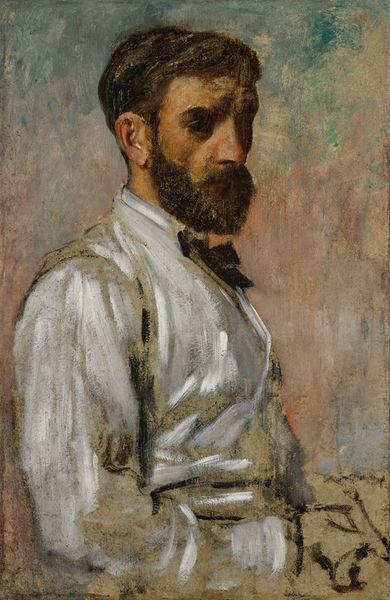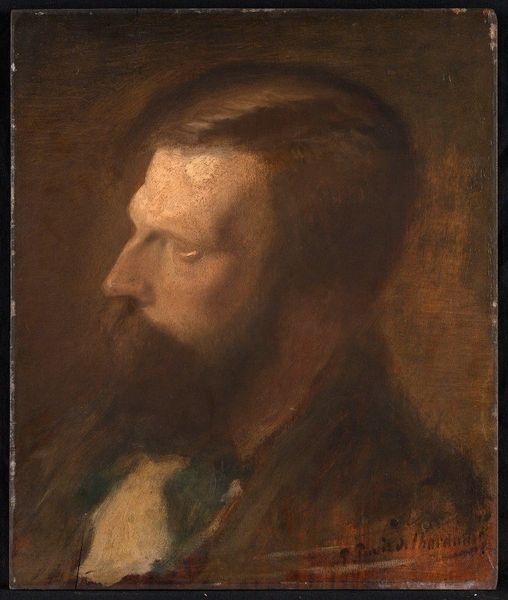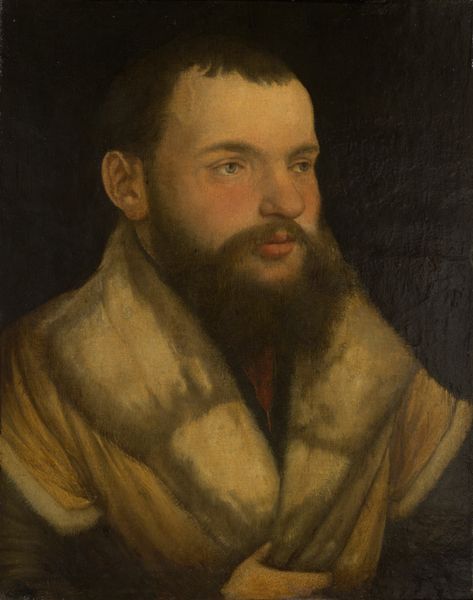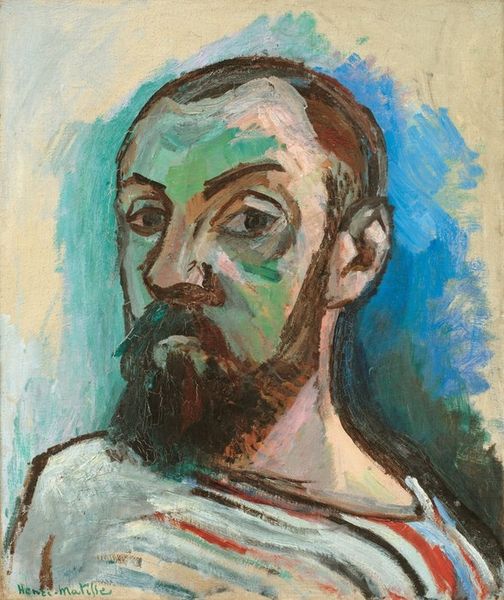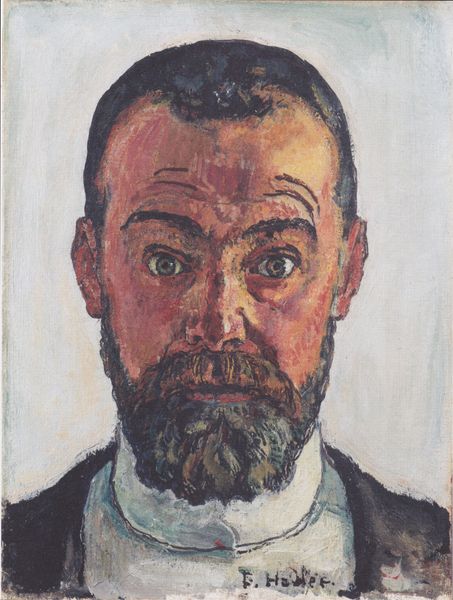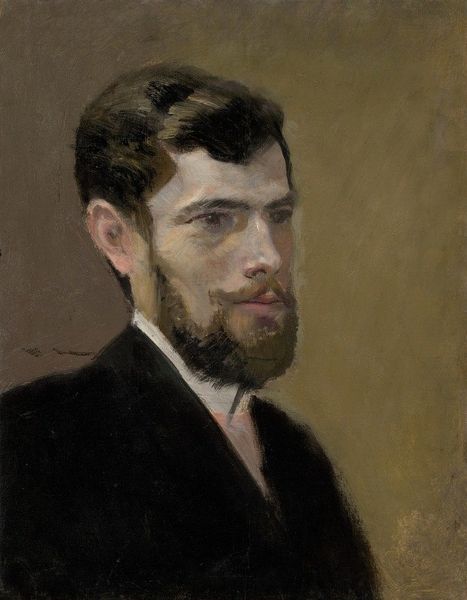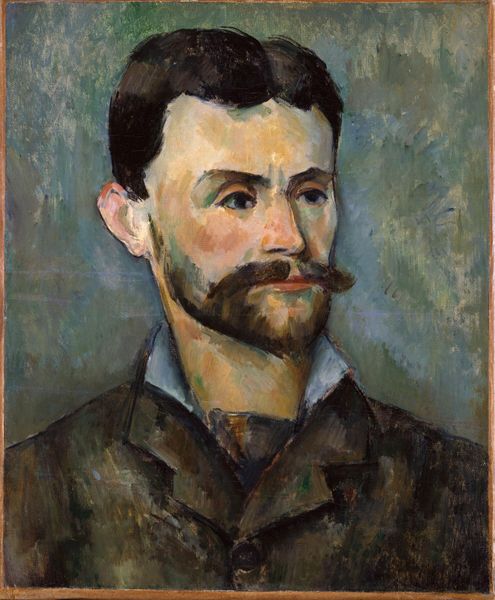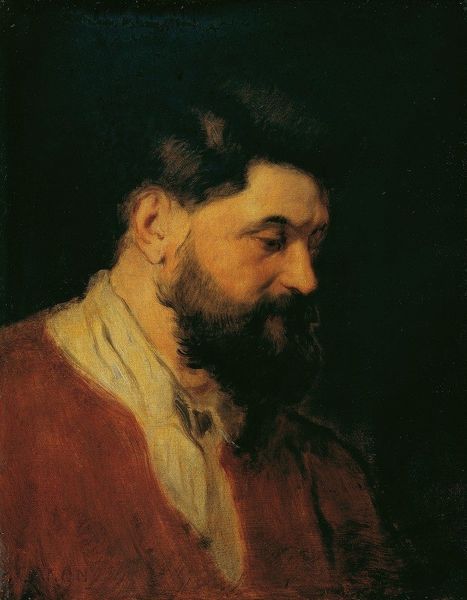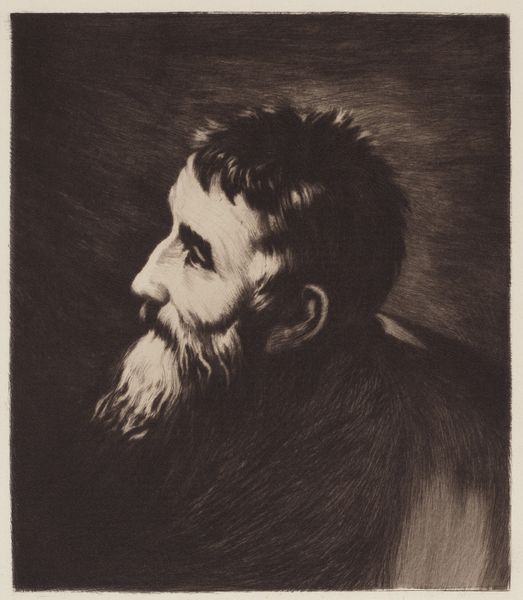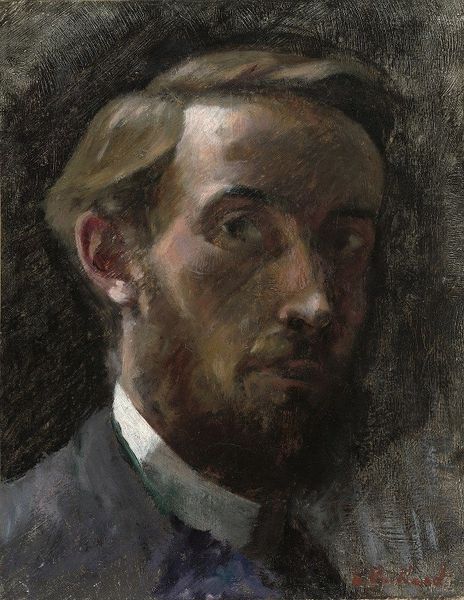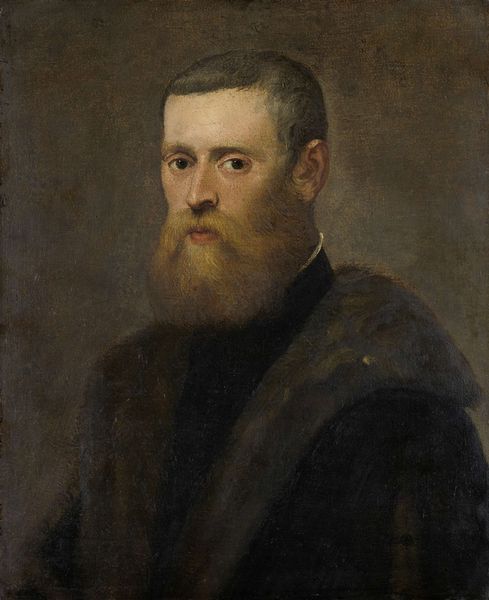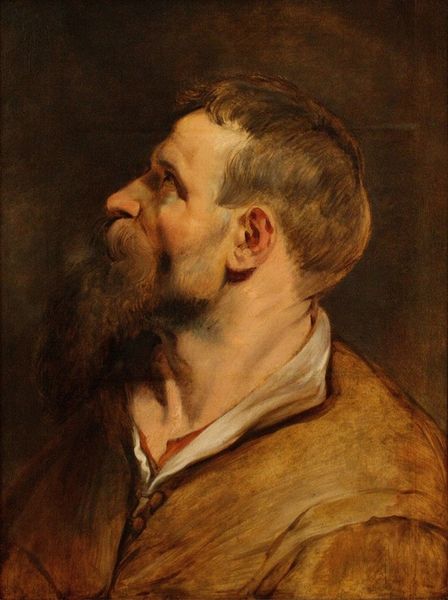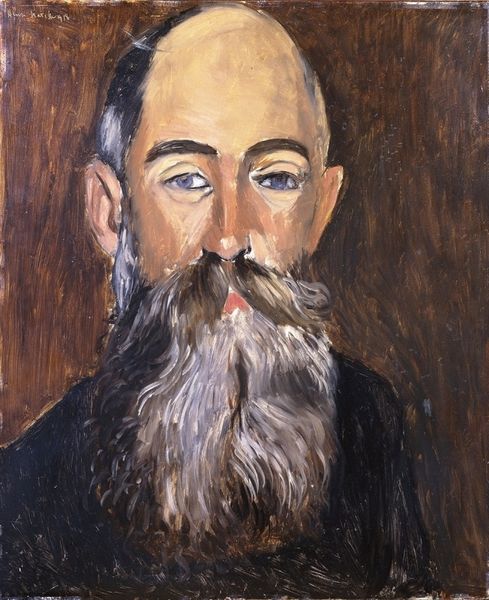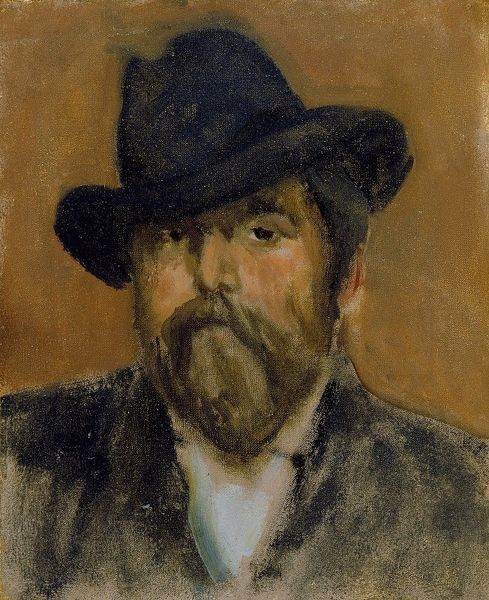
oil-paint
#
portrait
#
self-portrait
#
oil-paint
#
oil painting
#
intimism
#
post-impressionism
Dimensions: 55.2 cm (height) x 46.1 cm (width) (Netto), 68.7 cm (height) x 59.5 cm (width) x 5 cm (depth) (Brutto)
Curator: This is Jan Verkade's "Self-portrait," painted sometime between 1891 and 1894. The work is currently held here at the SMK, the Statens Museum for Kunst. Editor: He has such a determined look about him. The close-up composition feels really intimate, even confrontational, especially contrasted against the bright, somewhat agitated background. Curator: Verkade, closely associated with the artistic movement of Post-Impressionism and known for his later embrace of symbolism within the Catholic faith, paints himself with remarkable directness. The context of the time is key here. Many artists at this point were exploring individual expression and inner experience—challenging traditional academic portraits. Editor: Indeed. And there's something subtly rebellious about his choice of attire. Is that a Breton striped shirt? To represent himself, in that most famous sailor's garb... Is he aligning himself with the working class, or intentionally creating a particular visual identity, given his later, well-known spiritual path? Curator: It certainly invites us to question his social positioning. Consider the impact of artistic circles he was involved in at the time—influenced by the Nabis group—which promoted spiritual awareness through simplicity of form and an emphasis on everyday subject matter. Was he critiquing the established artistic establishment, reflecting a kind of self-effacement? Editor: The way he renders his own face… with that very detailed beard and those knowing, penetrating eyes... There’s such an internal narrative there. Is the painting hinting that an essential quality for the artist at that time became one's perception, with a specific class or political connotation? Curator: I think the materiality of the piece deserves note as well. It's rendered in oil paint, using, to my eyes, very short, almost stippled brushstrokes, creating a textural surface which almost hides the representational elements. What initially seems direct feels much more complicated when one moves closer. Editor: Looking again, you're so right. In its own time, a presentation of class, rebellion and artistic independence. So telling that it holds up to this very day. Curator: Absolutely. It underscores the multifaceted, never-ending interpretations in historical understanding. Thank you!
Comments
No comments
Be the first to comment and join the conversation on the ultimate creative platform.
